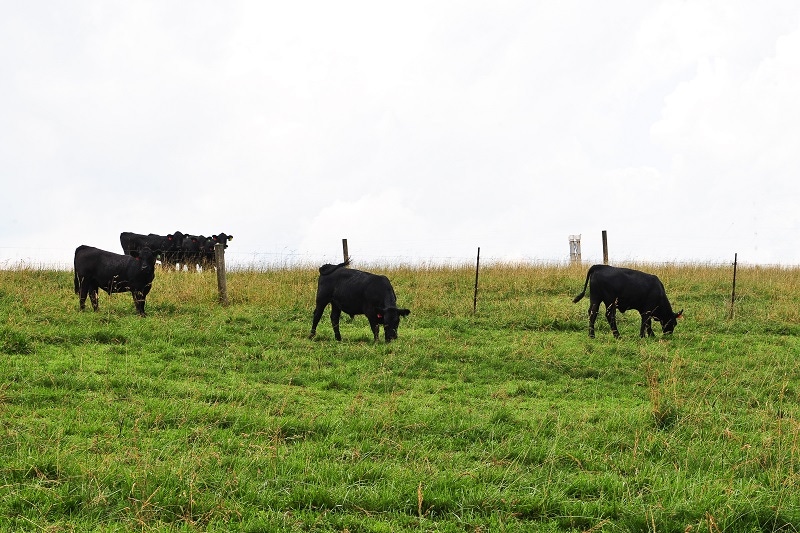
Renovating worn-out, toxic Kentucky 31 fescue pastures to newer novel endophyte fescue varieties is a proven way to increase profit potential for cattle producers in the fescue belt, but it requires some work.
Once new seedings are established, keeping rogue toxic fescue seeds from germinating and re-infecting pastures can be challenging if graziers do not employ some good management tactics.
USDA Agricultural Research Service research scientist Glen Aiken notes while initial renovation costs to plant novel endophyte fescues are slightly more, around $200 per acre in 2015, the improvements gained in animal performance make the upfront expense a worthwhile investment. Many newer beneficial endophyte tall fescue varieties, such as cultivars like Barenbrug's BarOptima PLUS E34, have been shown to be hardy, high-producing quality forages that promise improved average daily gains upward of an extra pound per day and enhanced reproduction in grazing livestock.
Year 1
To protect that investment and ensure lasting success of beneficial endophyte seedings, producers must give new stands time to establish. Bill Witt, retired University of Kentucky weed scientist, describes well-established grass plants as having three to four tillers per plant and a good root system present.
"You should be able to grab hold of the plants and not have them pulled out of the ground easily," says Witt.
Producers should keep cattle off renovated pastures and restrict grazing until plants are in at least Phase 2 growth stage. This is the stage when stem elongation occurs and plants are nearing boot stage. This will also allow plants adequate time to build up root reserves.
Aiken agrees, adding the same rule-of-thumb also applies to spraying new seedings for encroaching weeds. Most herbicides will have a statement on the label instructions noting, "Do not apply to newly seeded areas until grass becomes well-established."
Spraying too early may damage new seedlings and set the stand back, in turn doing more harm than good. Instead, Aiken suggests mowing pastures, if possible, to control weeds in the first year. This practice will also help to prevent seed heads from forming on plants in the first-year, reducing the risk of any leftover toxic fescue plants from producing seed.
Year 2
In year two, Aiken says producers can consider spraying novel endophyte pastures with Chaparral (an herbicide from Dow AgroSciences) which has been proven to suppress seedheads in tall fescue plants.
"In a pasture setting, toxic fescue seeds have been shown to survive upward of two years," says Aiken. "So the first two years are critical for controlling seedheads to manage the amount of mature seeds that survive. Now I know that goes against the idea of us wanting to let new plants reseed, but you can worry about that later."
Last, producers should keep in mind, along with the change in fescue varieties, new approaches to everyday pasture and livestock management will also be necessary to prevent re-infection of pastures with Kentucky 31.
Year 3 plus
Aiken and Witt offer the following four suggestions for producers to keep toxic fescue at bay in the years to come:
1. Use rotational grazing methods
"Once you replace toxic fescue with a novel endophyte variety, cattle aren't going to spend all their time in the shade and in ponds like they did before," says Aiken. "They're going to be grazing more. Intakes are going to be higher. So you have to be cognizant of your stocking rates and use rotational grazing methods."
Leaving around four inches of pasture residue post-grazing and providing adequate rest periods, along with good fertility management will help to maintain a healthy stand, says Aiken.
2. Clean your equipment.
Transfer of seeds by equipment such as mowers are one of the most common ways weedy plants are introduced to pastures, Witt points out. Cleaning equipment to remove hitchhiker seeds, especially when traveling from a toxic to beneficial endophyte pasture, is an easy way to prevent re-infection.
3. Don't feed toxic fescue / weed-infested hay in your novel endophyte pastures.
This is a common-sense step to prevent reintroduction, notes Witt. Being aware of what forages are present in any off-farm hay bought to feed cattle, knowing the maturity of hay at cutting, and if possible, feeding animals in a controlled sacrifice area will help to reduce toxic fescue seeds from getting into renovated pastures.
4. When moving cattle from toxic to novel endophyte fescue pastures keep animals in a holding area for 3-4 days.
When grazing toxic fescue late in the season, Aiken explains, the potential for cattle to ingest seedheads is high. To prevent any potentially toxic seeds from making it into novel endophyte pastures, cattle should be held in a sacrifice area until seeds have passed through their digestive tract, usually about a few days.
By following these strategies and implementing mindful, proactive management practices, Aiken and Witt say producers can expect to reap the benefits of novel endophyte fescues for years to come.
About the Author(s)
You May Also Like




